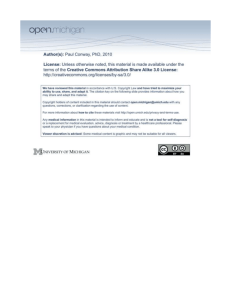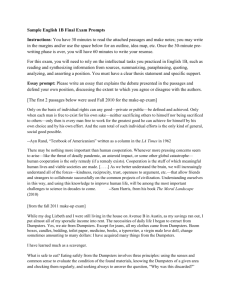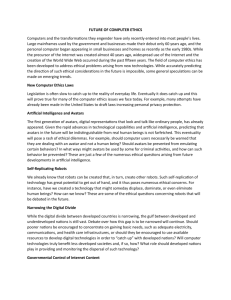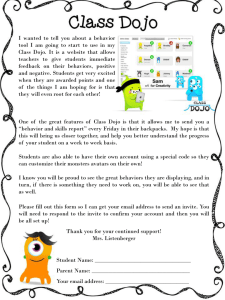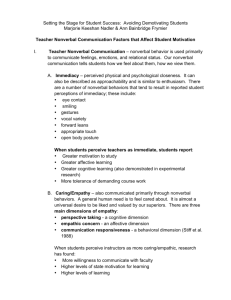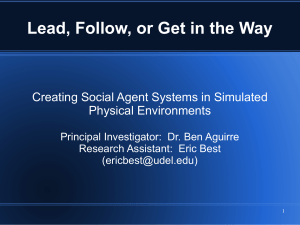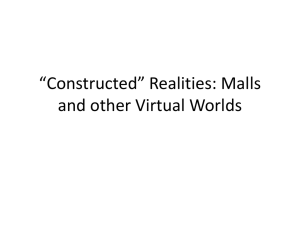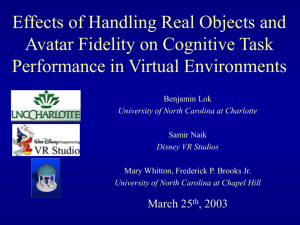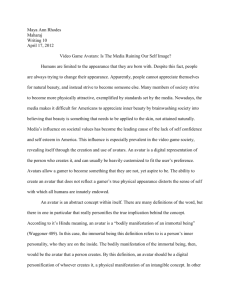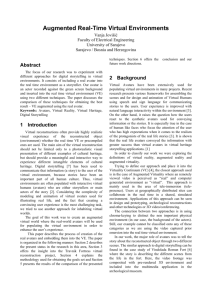Exploring the neural representation of faces using high
advertisement
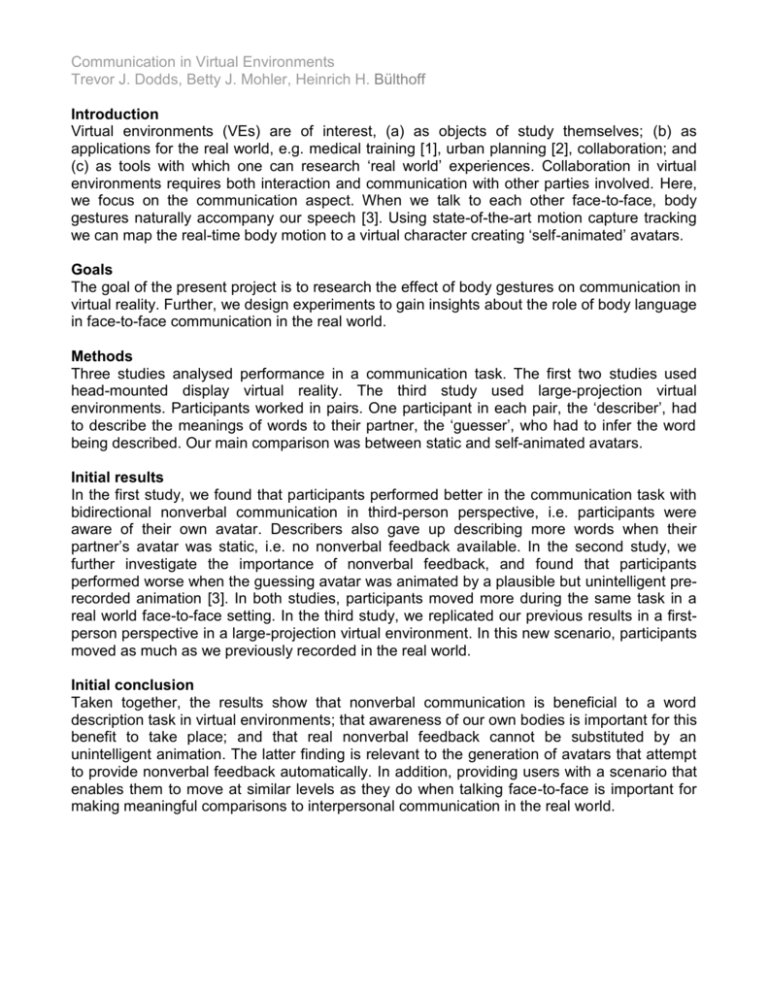
Communication in Virtual Environments Trevor J. Dodds, Betty J. Mohler, Heinrich H. Bülthoff Introduction Virtual environments (VEs) are of interest, (a) as objects of study themselves; (b) as applications for the real world, e.g. medical training [1], urban planning [2], collaboration; and (c) as tools with which one can research ‘real world’ experiences. Collaboration in virtual environments requires both interaction and communication with other parties involved. Here, we focus on the communication aspect. When we talk to each other face-to-face, body gestures naturally accompany our speech [3]. Using state-of-the-art motion capture tracking we can map the real-time body motion to a virtual character creating ‘self-animated’ avatars. Goals The goal of the present project is to research the effect of body gestures on communication in virtual reality. Further, we design experiments to gain insights about the role of body language in face-to-face communication in the real world. Methods Three studies analysed performance in a communication task. The first two studies used head-mounted display virtual reality. The third study used large-projection virtual environments. Participants worked in pairs. One participant in each pair, the ‘describer’, had to describe the meanings of words to their partner, the ‘guesser’, who had to infer the word being described. Our main comparison was between static and self-animated avatars. Initial results In the first study, we found that participants performed better in the communication task with bidirectional nonverbal communication in third-person perspective, i.e. participants were aware of their own avatar. Describers also gave up describing more words when their partner’s avatar was static, i.e. no nonverbal feedback available. In the second study, we further investigate the importance of nonverbal feedback, and found that participants performed worse when the guessing avatar was animated by a plausible but unintelligent prerecorded animation [3]. In both studies, participants moved more during the same task in a real world face-to-face setting. In the third study, we replicated our previous results in a firstperson perspective in a large-projection virtual environment. In this new scenario, participants moved as much as we previously recorded in the real world. Initial conclusion Taken together, the results show that nonverbal communication is beneficial to a word description task in virtual environments; that awareness of our own bodies is important for this benefit to take place; and that real nonverbal feedback cannot be substituted by an unintelligent animation. The latter finding is relevant to the generation of avatars that attempt to provide nonverbal feedback automatically. In addition, providing users with a scenario that enables them to move at similar levels as they do when talking face-to-face is important for making meaningful comparisons to interpersonal communication in the real world. References 1. Alexandrova IV, Rall M, Breidt M, Tullius G, Kloos C, Bülthoff HH and Mohler BJ (In press) Enhancing Medical Communication Training Using Motion Capture, Perspective Taking and Virtual Reality 19th Medicine Meets Virtual Reality Conference (MMVR 2012). 2. Dodds TJ and Ruddle RA (2009) Using mobile group dynamics and virtual time to improve teamwork in large-scale collaborative virtual environments, Computers & Graphics 33(2) 130-138. 3. McNeill (2007) Gesture & Thought, The University of Chicago Press, Chicago and London. 4. Dodds TJ, Mohler BJ and Bülthoff HH (2011) Talk to the virtual hands: Self-animated avatars improve communication in head-mounted display virtual environments, PLoS ONE 6(10): e25759. doi:10.1371/journal.pone.0025759 5. Dodds TJ, Mohler BJ, de la Rosa S, Streuber S and Bülthoff HH (2011) Embodied Interaction in Immersive Virtual Environments with Real Time Self-animated Avatars Workshop Embodied Interaction: Theory and Practice in HCI (CHI 2011), ACM Press, New York, NY, USA, 132-135. 6. Dodds TJ, Mohler BJ and Bülthoff HH (2010) A Communication Task in HMD Virtual Environments: Speaker and Listener Movement Improves Communication 23rd Annual Conference on Computer Animation and Social Agents (CASA 2010). Fig. 1. Two participants in a shared virtual environment, with static avatars (left) and self-animated avatars (right). Fig 2. Two participants in a shared virtual environment with self-animated avatars. The avatars and environments were rendered from the perspective of the participants, therefore in the images, particularly in the multi-projection display, the projected image appears distorted but would not appear distorted to the participant.
